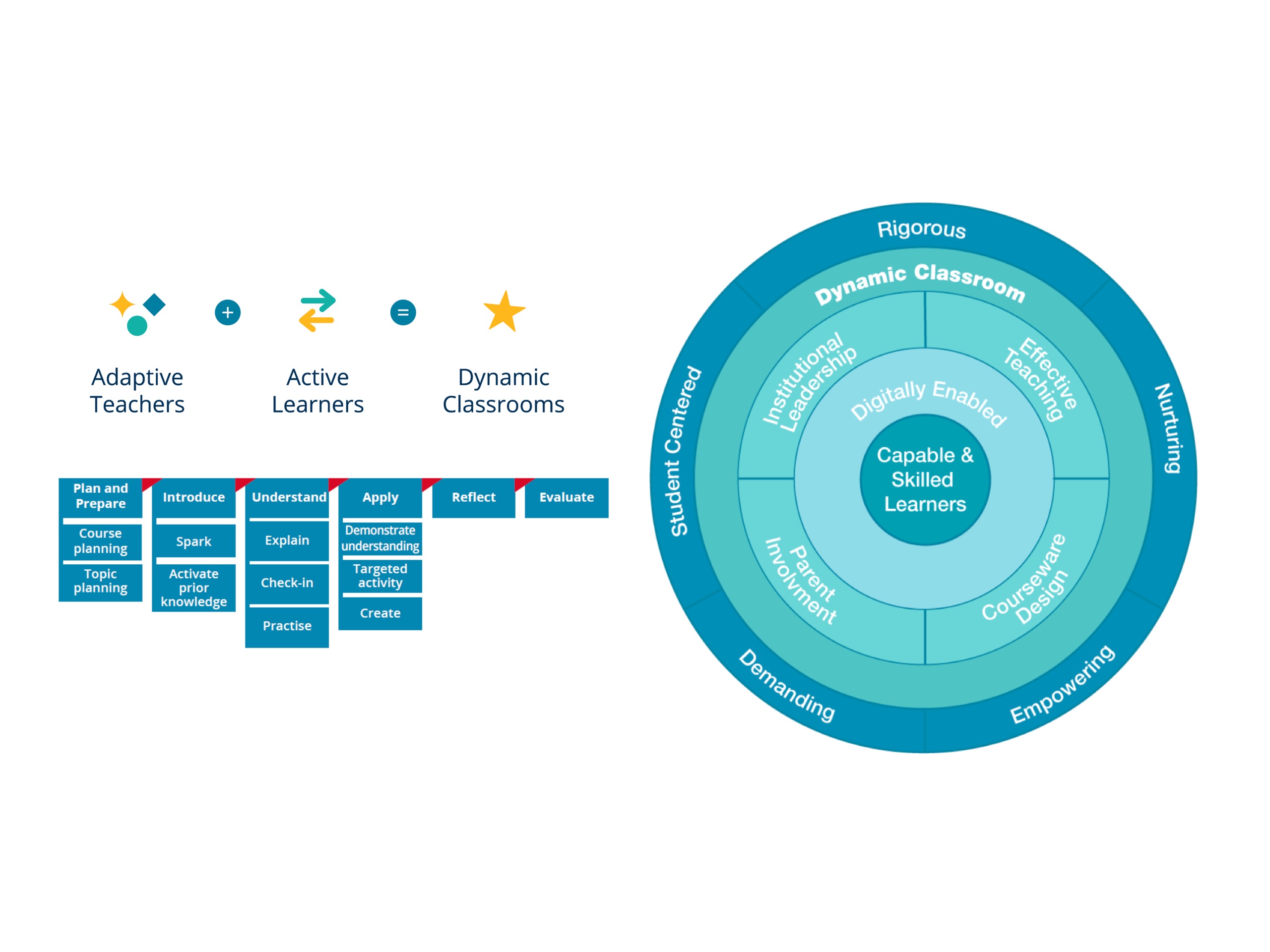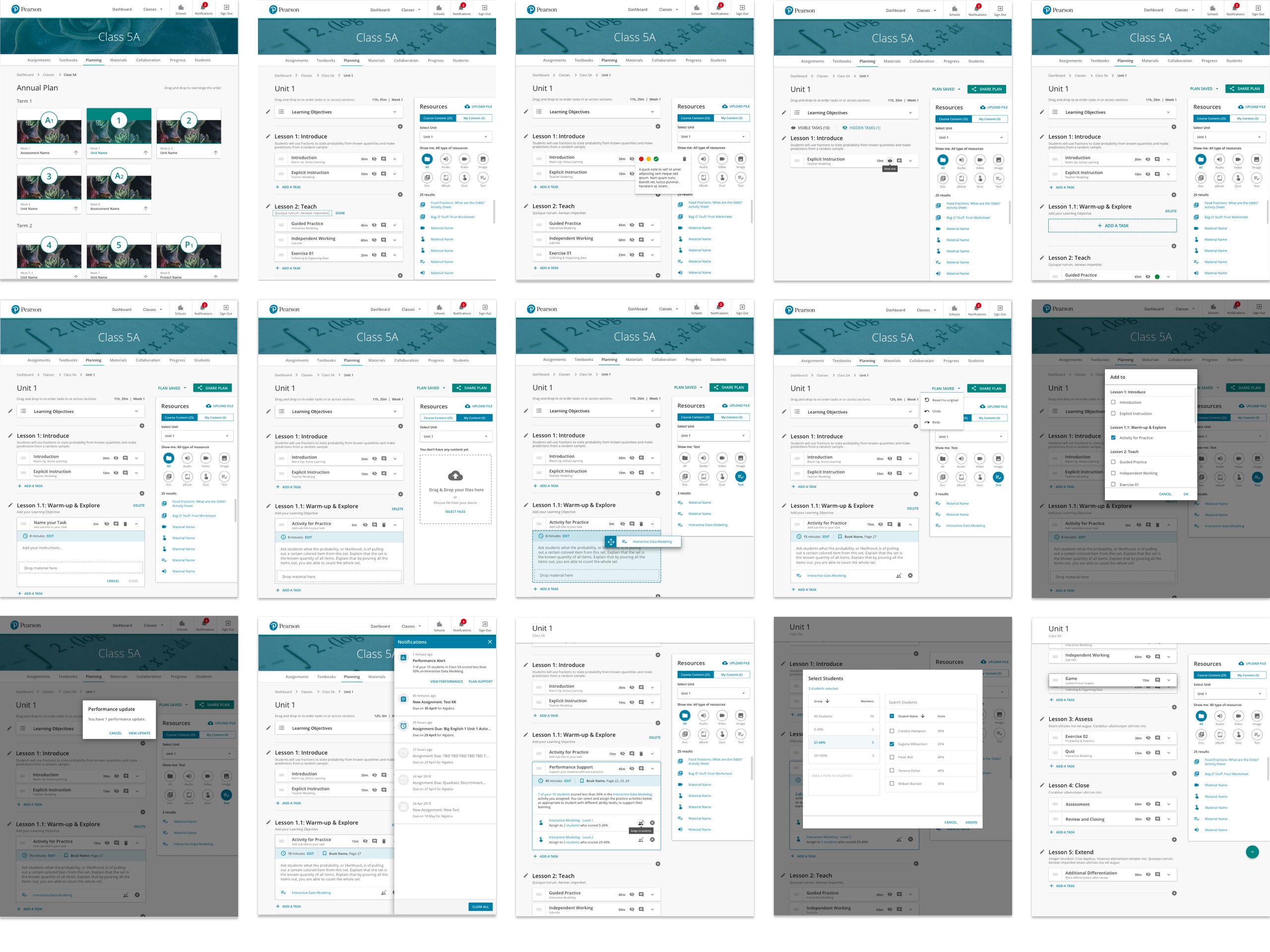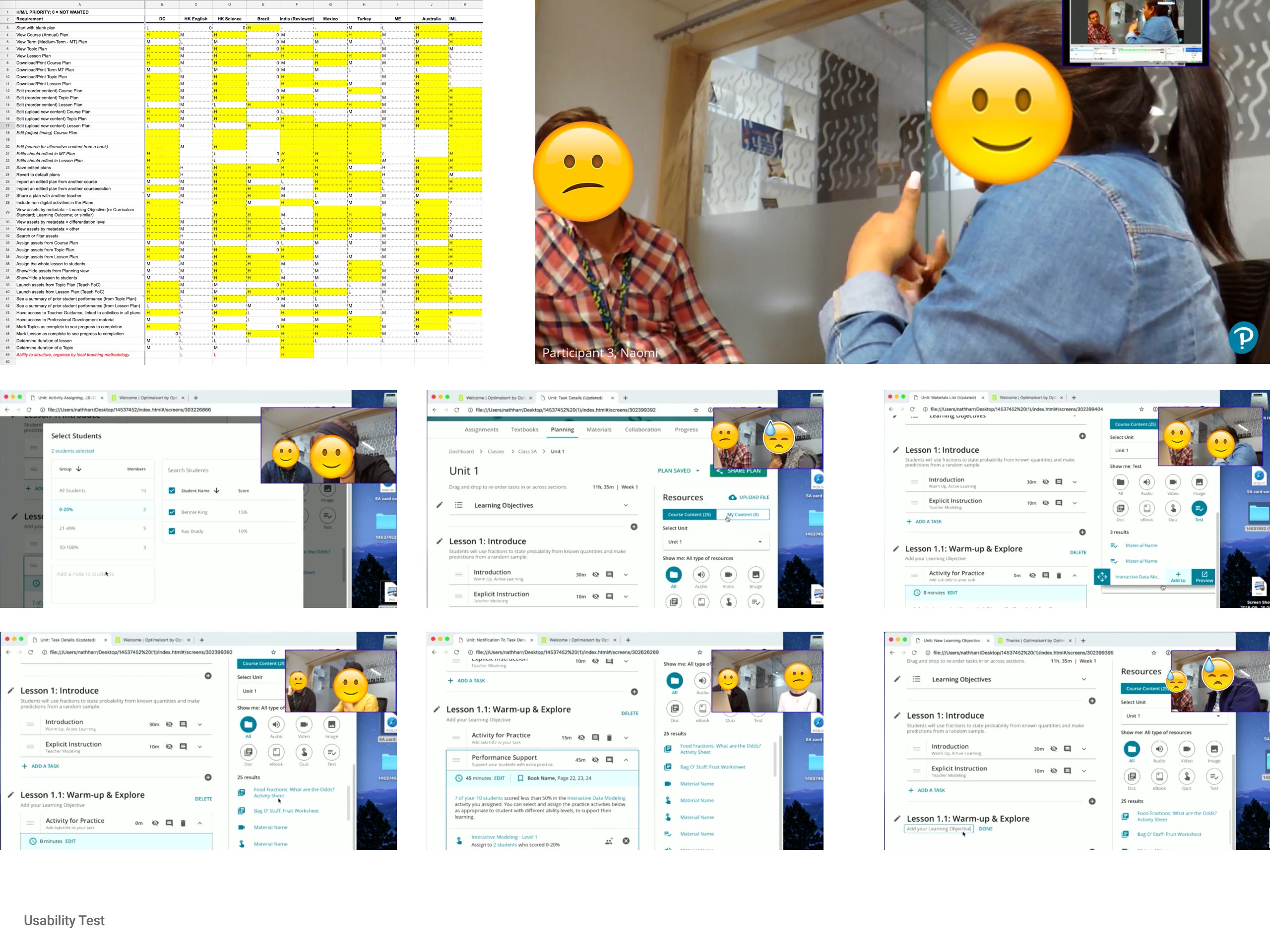
Dynamic Classroom Phase 1 - Lesson Plan
Client: Pearson
Design Hypotheses & Usability Study Working in progress...
Every round of testing brings us closer to the truth.
Business Requirement
The Dynamic Classrooms Instructional Model is already available for all Geographies who wish to use it as part of their product development process, to support effective products with a strong, researched and proven pedagogy built in for successful learning outcomes. It has been effectively applied to courseware in Hong Kong, Italy, UK, India and Australia.
As such, it is also the foundational learning design for the Future Product Models for K12.
In order for Dynamic Classrooms to achieve its true differentiating potential in the market along with achieving maximum impact on learning outcomes, there is a need to create supporting digital capabilities. Through digital capabilities, teachers and learners will be able to more effectively apply and experience the pedagogical innovation and potential of Dynamic Classrooms.
Through projects in Hong Kong, India, Italy and Australia, as well as the foundational concept research conducted by IDEO, we have identified the core digital capabilities for Dynamic Classrooms that can be drawn up to develop local products:
- Data-driven planning;
- Formative assessment;
- Recommendations for differentiated instruction.
In November 2018 there will be a trial in Italy for teachers to use these key capabilities, to inform full development and product marketing for a broader roll out of these to all Geos in 2019. The pilot product for this trail is a dedicated Planning & Teaching area, from where Teachers can adapt default plan, customize plan, create and organize their own content along with course cartridges, to teach in front of class, assign activities, and take interventions based on the assessment results from activities.
Challenge
Consolidate Geo requirements from DC, NY, South Africa, Hong Kong, Brazil, India, Mexico, Turkey, Australia, Italy and UK.
Explore techniques to control variability (standard deviation) when having fewer participants.
Process
1. Gather requirements from product team, instructional designers and wider content teams. Define clearly communicated and compelling evidence of customer needs (explicit and tacit). Explore possibilities for meeting those needs, and extrapolate findings from Further Product Model Research to inform design hypothesis and develop plans for formative research.
2. Create design hypotheses and high-fidelity interactive prototypes for validation, identify top tasks with clear success criteria.
3. Conduct lab Usability Studies in smaller iterative cycles for rapid feedback to identify usability issues, content issues and users' mental models. Analyze insights and iteratively test solutions in a timely manner, to continuously optimize usability and customer experience.
4. Deliver optimized design hypotheses to inform in-market (South Africa) evaluations in bigger cycles for border insight and validation. (WIP)
Thoughts
- Number of participants for qualitative studyTo identify a design's most important usability problems, testing 5-6 users is typically enough. Rather than run a big, expensive study, it's a better use of resources to run many small tests and revise the design between each one so we can fix the usability flaws as soon as we identify them.
- Removing outliers?It’s advisable to remove the outliers from the statistical analyses when computing the standard deviation in quant study. (Without the outliers, we’re more likely to reach correct conclusions, as we’re less likely to overestimate an average that happened to have a greater number of outliers.) However, in most qualitative study, it’s not entirely reasonable to exclude outliers because slow users are real, and we should take it further as an opportunity to explore whether the “bad luck” derived from bad design, or from participant’s personality, professional background, or technical constraint. E.g. one participant from our recently testing session in SA appeared to be interested but not over-ally comfortable with the tool and feature provided. Instead of drawing the session to a close early, we postponed the testing and asked her more questions, only found out that switching to digital planning tools from the physical/print materials in the region where she was from might not be widely welcomed as we anticipated. After encountering several similar cases we then concluded that supporting for print-friendly exports of the lesson plans will also be required for mass-market adoption.
- Innovator’s dilemma
As our CEO John Fallon put it recently, "the need to be one step ahead of teachers and students, not a hundred miles ahead." Some of the solutions that have promised to disrupt the education industry look great as a canned product demo, but then they hit the classroom… and teachers have other ideas. While the temptation may be to revolutionize, the tangible problems faced by learners that we should be solving are plentiful—and not necessarily best solved by starting from scratch, because scratch is usually an impoverished place to be.
Our ability to be on the ground with learners and teachers around the world, through the close relationships that our local teams build with their customers, is a big differentiator. We’ve developed a unique perspective on shared facets of the educational domain, and where local practice and culture demand customization. It gives us great economies of scale, and the insight to build global design patterns for learning, but also a deep empathy for our users and an understanding of where specializing for specific use cases will deliver the most value.



